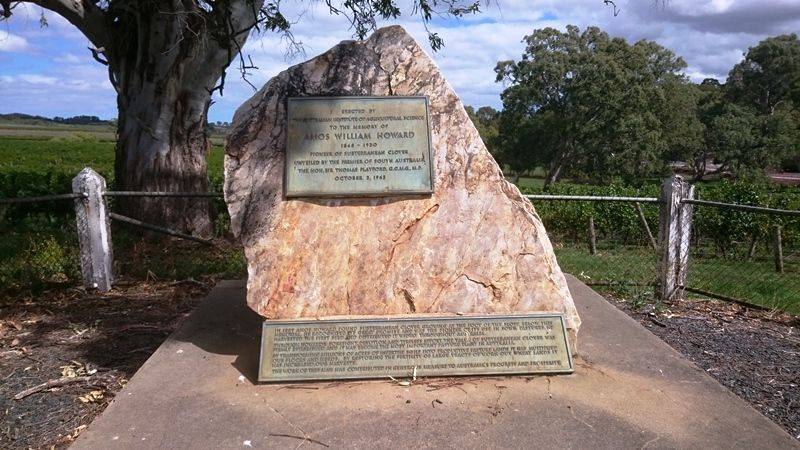
Amos William HowardPrint Page 

In 1936, 27 years before the monument was constructed a meeting convened by the Council, working in conjunction with the local Agricultural Bureau was held and several suggestions for the form of the memorial placed before the committee. The Australian Institute of Agricultural Science remembered Howard's work in 1963 with the erection of a quartzite boulder, unveiled by the Premier, Sir Thomas Playford, on which are two plaques.
Subterranean clover was discovered in the District in 1889 by Amos Howard, a farmer and nurseryman. Sub clover improved the soil, and large areas of depleted farmland were turned into productive pastures. The Mount Barker district became known as the "cream bowl" as the discovery of clover resulted in the dairy industry flourishing.
Location
| Address: | Old Princes Highway, near junction of Bald Hills Road, Nairne, 5252 |
|---|---|
| State: | SA |
| Area: | AUS |
| GPS Coordinates: | Lat: -35.040062 Long: 138.894695 Note: GPS Coordinates are approximate. |
Details
| Monument Type: | Monument |
|---|---|
| Monument Theme: | People |
| Sub-Theme: | Science |
| Link: | http://adb.anu.edu.au/biography/how… |
Dedication
| Actual Monument Dedication Date: | Thursday 3rd October, 1963 |
|---|
Erected by the Australian Institute of Agricultural Science
To the memory of Amos William Howard
1848 - 1930
Pioneer of subterranean clover.
Unveiled by the Premier of South Australia the Hon. Sir Thomas Playford, G.C.M.G., M.P.
October 3, 1963
Plaque :
In 1889 Amos Howard found subterranean clover growing at the foot of the slope below this memorial. He recognised its promise and was the pioneer of its use in sown pastures. He harvested the first seed and distributed it widely throughout Australia. Through Howard's foresight, devotion and tireless effort the value of subterranean clover was firmly established and it has become the most important pasture plant in Australia.
By transforming millions of acres of infertile soils into productive pasture land it has multiplied our flocks and herds. By restoring the fertility of large tracts of worn out wheat lands it has increased our harvests. The work of this man has contributed in generous measure to Australia's progress and prosperity.



